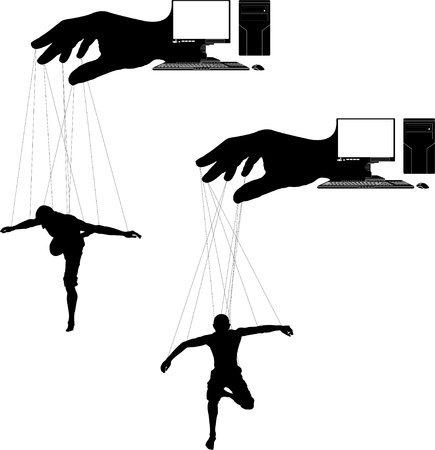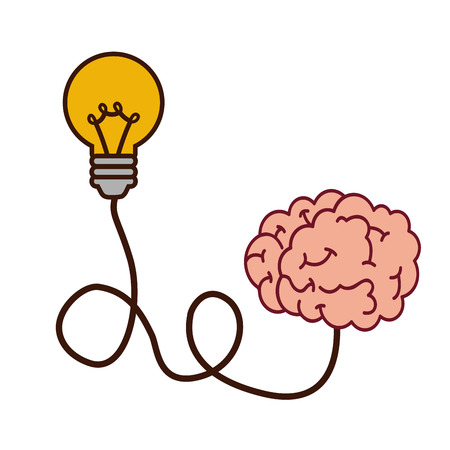Emerging Trends in Cognitive Rehabilitation
Innovative Approaches in Occupational Therapy
Cognitive rehabilitation is quickly evolving, especially within the field of occupational therapy in the United States. Therapists are moving beyond traditional paper-and-pencil tasks and embracing creative strategies that better fit their clients’ real-life needs. Today, interventions often focus on practical skills, like problem-solving for daily routines or adapting environments to boost independence at home and work.
New Technologies Shaping Practice
Technology is a major game-changer in cognitive rehab. From mobile apps that help clients practice memory skills to virtual reality (VR) programs that simulate everyday challenges, occupational therapists now have more tools than ever to support recovery and adaptation. These tech tools make therapy more engaging and can be customized to each client’s unique goals.
| Technology | How It’s Used | Benefits for Clients |
|---|---|---|
| Mobile Apps | Memory games, scheduling, reminders | Practice skills anywhere; promotes independence |
| Virtual Reality (VR) | Simulate real-world scenarios (e.g., grocery shopping) | Safe environment for skill-building; tailored challenges |
| Telehealth Platforms | Remote therapy sessions and monitoring progress | Access to care from home; flexible scheduling |
| Wearable Devices | Track activity, prompt tasks, monitor safety | Real-time feedback; supports daily routines |
The U.S. Clinical Perspective
In American clinical settings, there’s a strong push toward person-centered care—making sure therapy is meaningful to each individual’s life roles and cultural background. Therapists collaborate with clients and families to set goals that truly matter, whether returning to work, managing at school, or living independently. As research continues to highlight the effectiveness of these new approaches and technologies, occupational therapists across the U.S. are leading the way in providing evidence-based, innovative cognitive rehabilitation services.
2. Integration of Evidence-Based Practices
Bridging Research and Real-World Occupational Therapy
As cognitive rehabilitation continues to evolve, it is essential for occupational therapists in the United States to keep up with current research findings and effectively apply them in their everyday practice. Integrating evidence-based practices means using proven strategies that can help clients from diverse backgrounds achieve their goals more efficiently.
Strategies for Incorporating New Research Into Practice
- Stay Informed: Regularly review reputable journals, attend webinars, and participate in professional development opportunities focused on cognitive rehabilitation.
- Collaborate: Work closely with interdisciplinary teams, including neuropsychologists and speech-language pathologists, to share knowledge and discuss the latest interventions.
- Culturally Responsive Care: Adapt interventions to fit the cultural, linguistic, and socioeconomic backgrounds of American clients. This ensures that therapy remains meaningful and accessible.
- Use Technology: Implement digital tools such as cognitive training apps, telehealth platforms, or virtual reality exercises that are supported by research and accessible to clients across different settings.
- Monitor Progress: Use standardized assessments and client feedback to evaluate the effectiveness of interventions and make data-driven adjustments as needed.
Practical Application: Tailoring Interventions for Diverse Populations
Occupational therapists often work with clients from various backgrounds. The following table illustrates how evidence-based strategies can be tailored to meet specific needs:
| Client Population | Evidence-Based Strategy | Practical Example |
|---|---|---|
| Aging Adults | Cognitive stimulation activities | Memory games adapted for older adults, group discussions on familiar topics |
| Pediatric Clients | Play-based cognitive tasks | Puzzles, interactive storytelling using culturally relevant themes |
| Bilingual Individuals | Linguistically appropriate interventions | Cognitive exercises in both English and the client’s primary language |
| Veterans with TBI | Technology-assisted therapy | Virtual reality scenarios mimicking daily tasks or workplace situations |
| Urban Low-Income Families | Community resource integration | Cognitive training sessions at local community centers with access to free materials |
The Role of Continuous Learning in Occupational Therapy Practice
The field of cognitive rehabilitation is rapidly advancing. By prioritizing ongoing education and integrating new evidence into daily practice, occupational therapists can provide high-quality care that reflects both scientific progress and the unique needs of American communities. Engaging clients and families in this process further strengthens outcomes and fosters a collaborative approach to rehabilitation.

3. Promoting Client-Centered and Culturally Responsive Care
Understanding the Importance of Individualized Care
Cognitive rehabilitation within occupational therapy is most effective when it is tailored to each clients unique background, values, and needs. In the United States, people come from diverse cultures, speak different languages, and have a wide range of life experiences. Recognizing these differences helps therapists provide care that truly matters to their clients.
Key Elements of Client-Centered and Culturally Responsive Practice
| Element | Description | Examples in U.S. Context |
|---|---|---|
| Personalization | Customizing interventions based on individual goals, routines, and challenges. | Adapting memory strategies for a college student vs. a retired veteran. |
| Cultural Awareness | Recognizing and respecting cultural beliefs, traditions, and communication styles. | Incorporating family involvement for clients from collectivist backgrounds. |
| Linguistic Adaptation | Providing materials and instructions in the client’s preferred language. | Using Spanish-language tools for Hispanic/Latino clients. |
| Value-Based Goal Setting | Setting therapy goals that reflect what matters most to the client. | Focusing on community participation for clients who value social engagement. |
| Accessible Resources | Ensuring interventions are practical and available in the client’s environment. | Connecting clients with local support groups or online resources. |
Strategies for Occupational Therapists in the U.S.
- Build Trust: Spend time getting to know your client’s story, preferences, and challenges before planning interventions.
- Ask Open-Ended Questions: Use questions like “What does a typical day look like for you?” or “Are there any traditions or routines important to you?”
- Collaborate with Families: Involve family members or caregivers when appropriate to support carryover at home.
- Stay Informed: Learn about different cultures common in your area and seek training in cultural competency.
- Advocate for Equity: Identify barriers such as insurance coverage or transportation, and help connect clients to resources they need.
The Value of Diversity in Cognitive Rehabilitation Research
Future research should include participants from various cultural, linguistic, and socioeconomic backgrounds. This ensures cognitive rehabilitation approaches are effective for everyone—not just a select group. Studies should also explore how American values (such as independence and self-advocacy) shape therapy outcomes and client satisfaction.
4. Interdisciplinary Collaboration and Advocacy
Cognitive rehabilitation in occupational therapy is most effective when it brings together professionals from different backgrounds. By working as a team, occupational therapists, speech-language pathologists, neuropsychologists, physicians, social workers, and families can share knowledge and skills to help clients achieve their best possible outcomes. In the United States, this collaborative approach is becoming more common as healthcare systems recognize the benefits of teamwork.
Why Interdisciplinary Collaboration Matters
No single professional has all the answers when it comes to cognitive rehabilitation. For example, an occupational therapist may focus on daily activities and routines, while a speech-language pathologist might address communication and memory strategies. Neuropsychologists contribute with assessments and brain function insights. When these professionals work together, clients receive more personalized care that addresses all aspects of their lives.
Examples of Collaborative Partnerships
| Team Member | Role in Cognitive Rehabilitation | Benefits of Collaboration |
|---|---|---|
| Occupational Therapist | Improves daily living skills and adapts environments | Practical solutions for real-life challenges |
| Speech-Language Pathologist | Enhances communication and cognitive strategies | Better memory and problem-solving support |
| Neuropsychologist | Conducts detailed assessments of brain function | Personalized treatment planning |
| Physician/Neurologist | Manages medical needs and medications | Addresses underlying health conditions |
| Social Worker/Case Manager | Coordinates resources and family support | Smoother transitions across care settings |
| Family/Caregivers | Provides everyday insight and encouragement | Reinforces strategies at home and in the community |
The Role of Advocacy in Advancing Practice
Advocacy goes hand in hand with collaboration. Occupational therapists and their partners can raise awareness about the importance of cognitive rehabilitation by educating policymakers, insurance providers, and community organizations. This might include sharing success stories, promoting research findings, or participating in local health fairs. Strong advocacy efforts help secure funding for new programs, support ongoing research, and ensure that people with cognitive challenges have access to high-quality care.
Ways to Foster Collaboration and Advocacy:
- Create regular interdisciplinary team meetings to discuss client progress and goals.
- Develop shared treatment plans that reflect input from all team members.
- Participate in professional organizations such as the American Occupational Therapy Association (AOTA) or Brain Injury Association of America to stay connected with peers.
- Engage families as active members of the rehabilitation team.
- Promote community events focused on brain health and cognitive wellness.
- Liaise with local government representatives to advocate for supportive legislation.
5. Addressing Barriers and Expanding Access
Understanding the Challenges in Cognitive Rehabilitation
Delivering effective cognitive rehabilitation within occupational therapy faces several challenges across American communities. These barriers can impact whether individuals get the support they need to improve their daily functioning. Lets break down some of these key obstacles and explore ways to move forward.
Key Obstacles in Accessing Cognitive Rehabilitation
| Obstacle | Description | Impact on Clients |
|---|---|---|
| Health Equity Gaps | Differences in access based on race, income, or location (urban vs rural) | Inequitable care and outcomes for underserved groups |
| Insurance & Policy Limitations | Restrictions in insurance coverage or unclear policies regarding cognitive rehab services | Clients may pay out-of-pocket or forego needed therapy |
| Lack of Provider Training | Not all occupational therapists have specialized training in cognitive rehab techniques | Variable quality of care depending on provider expertise |
| Geographic Barriers | Limited availability of services in rural or remote areas | Long travel times or no access at all for some clients |
| Cultural & Language Barriers | Cultural misunderstandings or lack of linguistically appropriate services | Poor engagement and missed opportunities for effective intervention |
Focusing on Health Equity and Policy Development
Improving health equity means making sure everyone—regardless of their background or zip code—has a fair chance to benefit from cognitive rehabilitation. This includes:
- Expanding Medicaid and insurance coverage: Advocating for policies that recognize cognitive rehab as essential care.
- Diversifying the workforce: Recruiting and training therapists from varied backgrounds to better reflect the communities they serve.
- Developing culturally responsive approaches: Creating interventions that respect clients’ values, beliefs, and languages.
- Building community partnerships: Collaborating with local organizations to identify needs and deliver services where people live.
Tackling Access Issues with Innovative Solutions
To reach more Americans, occupational therapy practitioners are exploring creative ways to expand access:
- Telehealth: Providing cognitive rehabilitation sessions via secure video calls helps bridge distance gaps, especially for those in rural areas.
- Mobile clinics: Bringing therapists directly into underserved neighborhoods through mobile units or pop-up events.
- Community-based programs: Partnering with schools, senior centers, and faith organizations to offer group sessions or educational workshops.
- Bilingual services: Hiring staff who speak multiple languages to connect with non-English-speaking families.
The Path Forward: Collaboration and Advocacy
Pushing the field ahead means working together—therapists, policymakers, insurers, and communities must all play a part. By identifying what stands in the way and acting on new ideas, we can make cognitive rehabilitation more accessible and equitable for every American who needs it.


